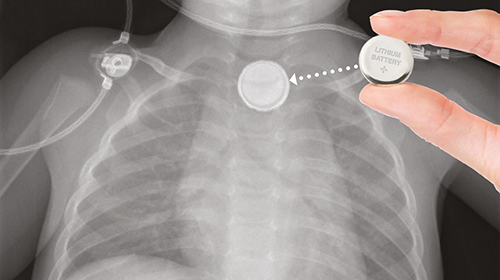PDF 1.34 MB
Brochure to raise awareness of the hidden dangers of button batteries, especially to young children, as well as provide detailed information on treatment and prevention.
Injuries including death can occur within 1 to 2 hours after swallowing or inserting a button battery
Button batteries can get stuck in a child’s throat without blocking their airway - you may not even know that it is in there. The only way to tell if a button battery has been swallowed is by x-ray.

Around 20 children present to a hospital every week in Australia with suspected button battery ingestion or insertion. One child a month has serious injuries often requiring multiple surgeries with some experiencing lifelong consequences.
Remember that even if your child says they haven’t swallowed a battery does not mean they haven’t. If you suspect that a battery may have been swallowed - you must act quickly.
Button batteries cause injuries because:
Symptoms caused by swallowing a button battery are not unique and can look like many other illnesses.
Symptoms include:
Button batteries can get stuck in a child’s throat without blocking their airway - you may not even know that it is in there.
Delays in seeking medical treatment can occur if a child does not tell you or is unable to tell you that they have accidentally swallowed, inhaled or inserted a battery.
These delays increase the risk of severe injuries.
A warning about button battery injuries from the Medical Director of the Emergency Department at the Women’s and Children’s Hospital.
For more information about button batteries and how to make your home safe: